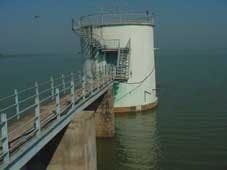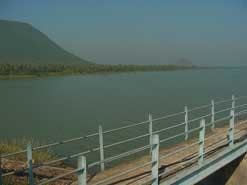Energy efficiency key to improving municipal water supply systems
By Madhav Kamath
Water and energy efficiency are the most cost-effective ways in which water delivery services can be improved for existing consumers, and meet India's needs to meet water supply demands for its growing population.
Efficiency at the municipal level can suggest one of two scenarios: providing additional water for the same energy or providing the same quantity of water at lower cost. Ultimately, the unit of energy consumed (termed as specific energy) is a vital factor that dictates the efficiency of a water supply system. A comprehensive assessment is needed to improve water and energy efficiency to reduce costs, increase service capacity of the existing system, and meet the demands of more consumers.
Energy-saving opportunities generally fall under the category of no/low, medium and high investments. Of these three, around 50% to 60% fall under the no/low and medium investment categories. These opportunities should be set in priority to reduce the burden on municipalities and to ensure cleaner air in a safer environment. Prolonging this enactment period would increase the investment required for long-term implementation.
Indian municipalities could improve system efficiencies by 20% to 30%. Globally, bulk water supply systems could save more energy annually than the entire energy consumption of some developing nations in Asia. Unfortun-ately, relatively little attention have been given to reduce energy consumption in these systems due to several social, economic, technical and vested interests.
Energy costs continue to escalate. In 1981, the total installed capacity in India was 30,000 MW; currently, it has increased by more than three-fold, to around 100,000 MW, and will continue to rise. Studies indicate that energy-efficient technologies can save 5% to 30%. The percentage varies in different sectors, but the municipal sector can save 30%.
Municipal water supply systems contribute some 50% to 60% of total municipal expense. In addition, municipalities are burdened by operation and maintenance costs. Revenue from municipal bulk water supply systems is lower compared with the expenses on non-metered/illegal connections, subsidised water charges, transmission line leaks, and energy inefficiency in pumping systems. Given the social and political obstacles to increased funding for water systems, municipalities have few options to increase revenues other than by improving the efficiency of bulk water supply systems.
Municipal water utilities often lack the institutional capacity to develop practical approaches for maximising water and energy efficiency, even after recognising the potential benefits. Typically, management does not empower staff to directly address efficiency issues.
The management models that most municipal utilities employ to deal with efficiency - irrespective of the composition of their ownership - fall somewhere among the three general approaches of ad hoc, single manager and team. Municipal water authorities find that water and energy efficiency gains increase when they change from ad hoc decision-making towards a holistic team approach.
Local authorities, however, are not always motivated to employ such measures for several reasons.
• Effective planning during the commissioning stage;
• Shortfall of funds for project allocation and rehabilitation needs;
• Improper accounting/metering of water supply systems;
• Lack of staff commitment and motivation;
• Lack of awareness and training;
• Improper monitoring and maintenance practices.
Effective planning during the commissioning stage.
Equipment contributes to the majority of design inefficiencies encountered and would be, in turn, dictated by system parameters. Equipment must be carefully selected during the commissioning stage. Equipment efficiency starts to decline eventually although it may continue to perform its duty. The following factors contribute to deficient operation.
Experts at The Energy and Resources Institute (TERI) claim that "mismatch in heads" is the key factor that paves the way towards inefficient operation. While designing a new system, municipal authorities should provide sufficient cushion in "pump heads." A pump (required 20 to 30 years down the line), if installed at a much earlier stage, would operate differently from the system characteristics curve. The duty conditions (Q-H) of the pump can be set to meet the needs of the growing population, which would effectively use only necessary energy at successive stages of pumping.
Pumping machinery should be formulated for the existing system; subsequently, the equipment can be upgraded at a later date when frictional losses increase and pumping system efficiency starts to decline. The energy savings that would result by adopting this approach would be enormous, and the cost savings envisaged may be sufficient for that required during system upgrade.
Shortfall of funds for project allocation and rehabilitation needs.
Rehabilitation needs arise due to growing population and equipment inefficiencies. Factors responsible for equipment inefficiencies are mainly incorrect size of machinery for a particular system, design for equipment's particular rating, and ageing equipment. Municipalities are often burdened with high operation and maintenance costs due to these factors. Also, sufficient funds are not available within municipalities to dispense part of the revenue towards projects; consequently funding from external sources is predominant in almost all municipalities in India.
Improper accounting/metering of water supply systems.
An accurate metering and accounting system helps municipalities to become aware of system problems and bottlenecks, identify the causes of these problems, and then take corrective action. Metering and accounting systems have helped many municipalities cut energy consumption by 10%.
Normally, the facilities required for estimating system parameters are absent in a municipal water supply system. Power parameters, such as voltage, current, power factor and frequency, system pressure, and even the output that the pump delivers, should be available. By knowing these conditions, one can gauge a baseline figure of how well the system is operating.
The following points should be given top priority when a new system is designed:
• Accounting of water that is pumped from head works by installing online flow meters;
• Metering of water that is pumped to individual sections of the city;
• Assessing the number of commercial and domestic water connections;
• Calculating revenue inflow from households and commercial establishments vis-à-vis total expenditure incurred for water pumping;
• Pinpointing non-metered connections or losses occurring due to transmission line leaks.
Quite often, the majority of Indian municipalities do not have a benchmark to meter and monitor and, thereby, rectify the deficiencies. This failure affects revenues on a long-term basis.
Lack of staff commitment and motivation.
In Indian municipalities, staff commitment and motivation are the two most crucial and important factors that must be established. Most municipal personnel follow a routine working pattern rather than going a step further. The routine working pattern can be attributable to lack of individual commitment, and most importantly, absence of motivation from higher links in the chain, which are required to excel. A human resources team should be formed for these assignments, whereby working personnel can become aware of the bottlenecks and take necessary actions towards improving energy efficiency. Moreover, back-up support from higher management positions can bring about miraculous results towards achieving higher efficiency.
Lack of awareness and training.
A majority of the municipalities in India are not familiar with new concepts and technologies that currently prevail in the market due to the lack of education and training. Munici-palities should make it part of their work culture to educate ground-level as well as supervisory staff on energy, water and the technologies that are available to improve efficiency. Inefficiencies should be pointed out, and figures should be converted into their rupee equivalents, and given in terms of hour, day, and year. These figures would result in cost-effective initiatives emerging from ground level staff members who operate the system.
Improper monitoring and maintenance practices.
A very important but often ignored factor determining energy efficiency for a system is its operating practices. Most installations operate on the 100% stand-by concept, which involves single pump operation; 50% are on stand-by where parallel operation is predominant. However, the lack of preventive maintenance, funds and political commitment often results in no stand-by equipment that is in working condition. Consequently, the entire workload falls on running equipment and its efficiency starts to decline without any preventive maintenance. These problems could be overcome by incorporating sufficient stand-by equipment for the said duty, allocating funds exclusively for equipment overhaul/maintenance, and adhering to preventive maintenance practices.
Author's Note
Madhav Kamath is a research associate at The Energy and Resources Institute (TERI) Southern Regional Centre, located in Bangalore, Karnataka, India. For more information, contact by Email: [email protected]


